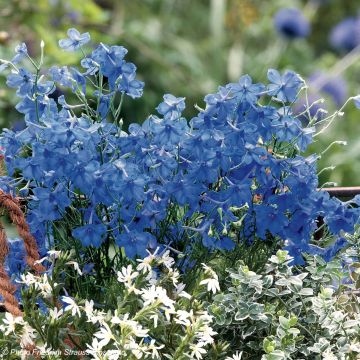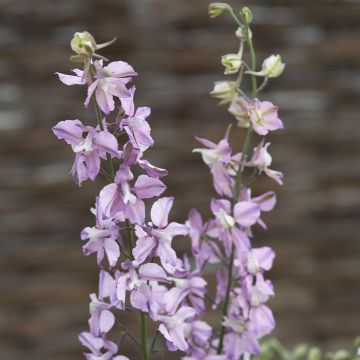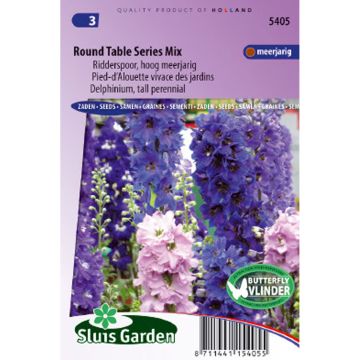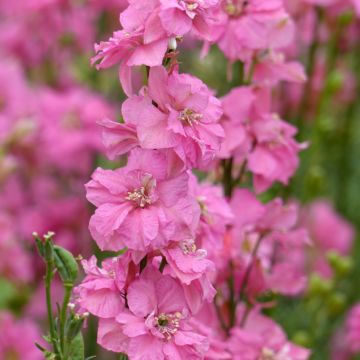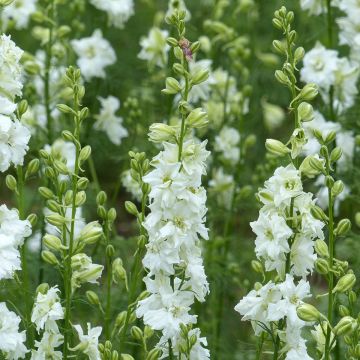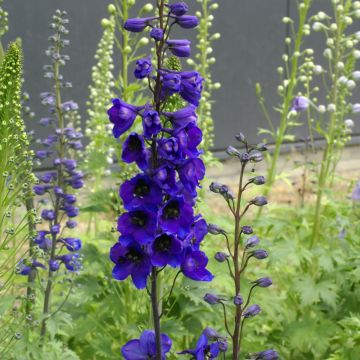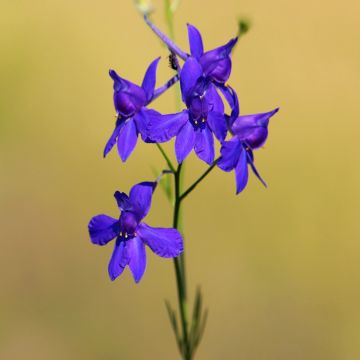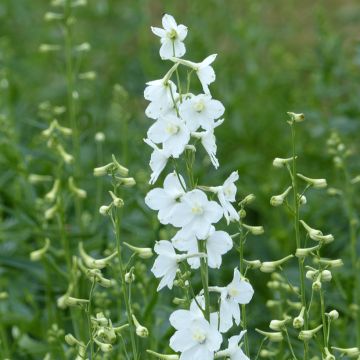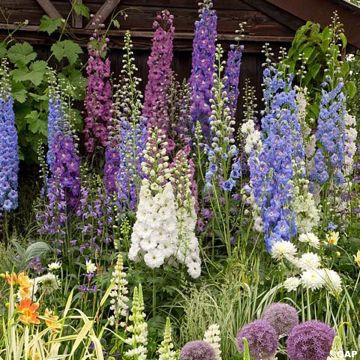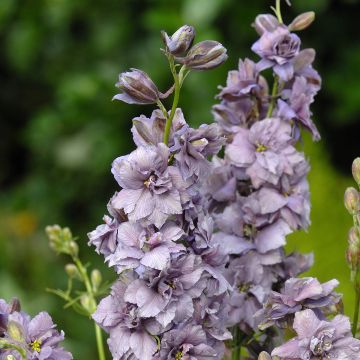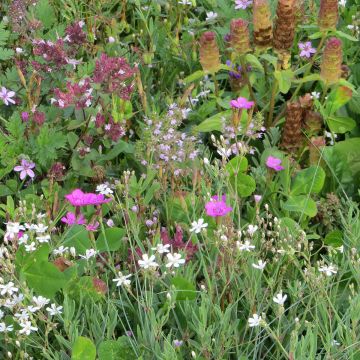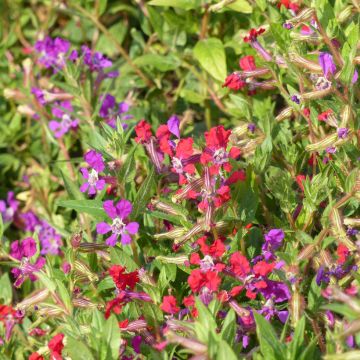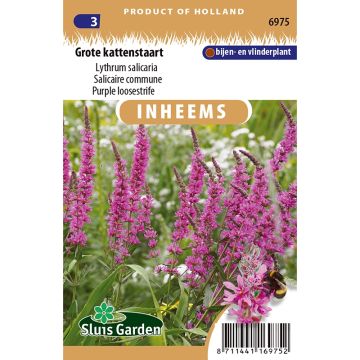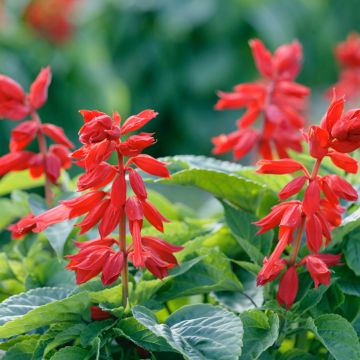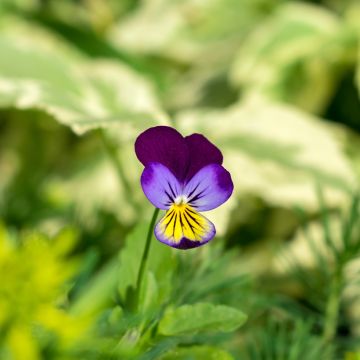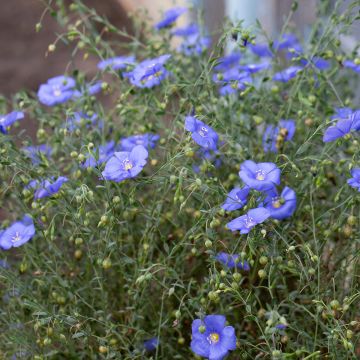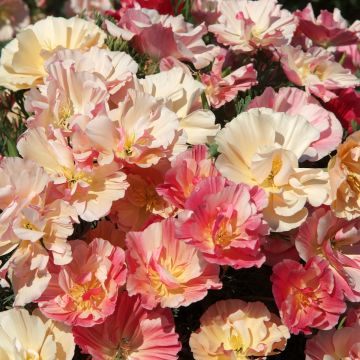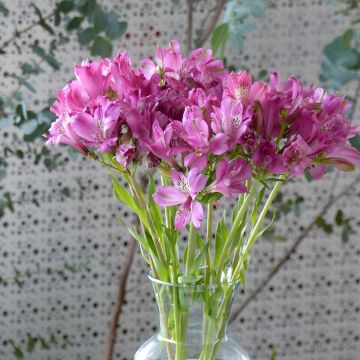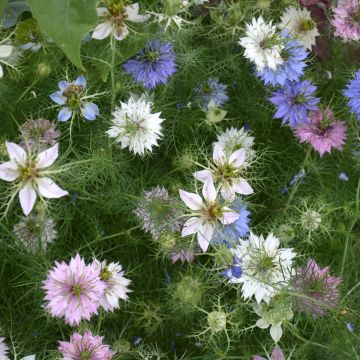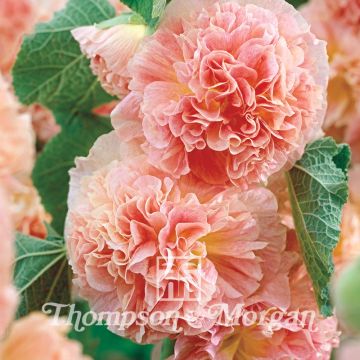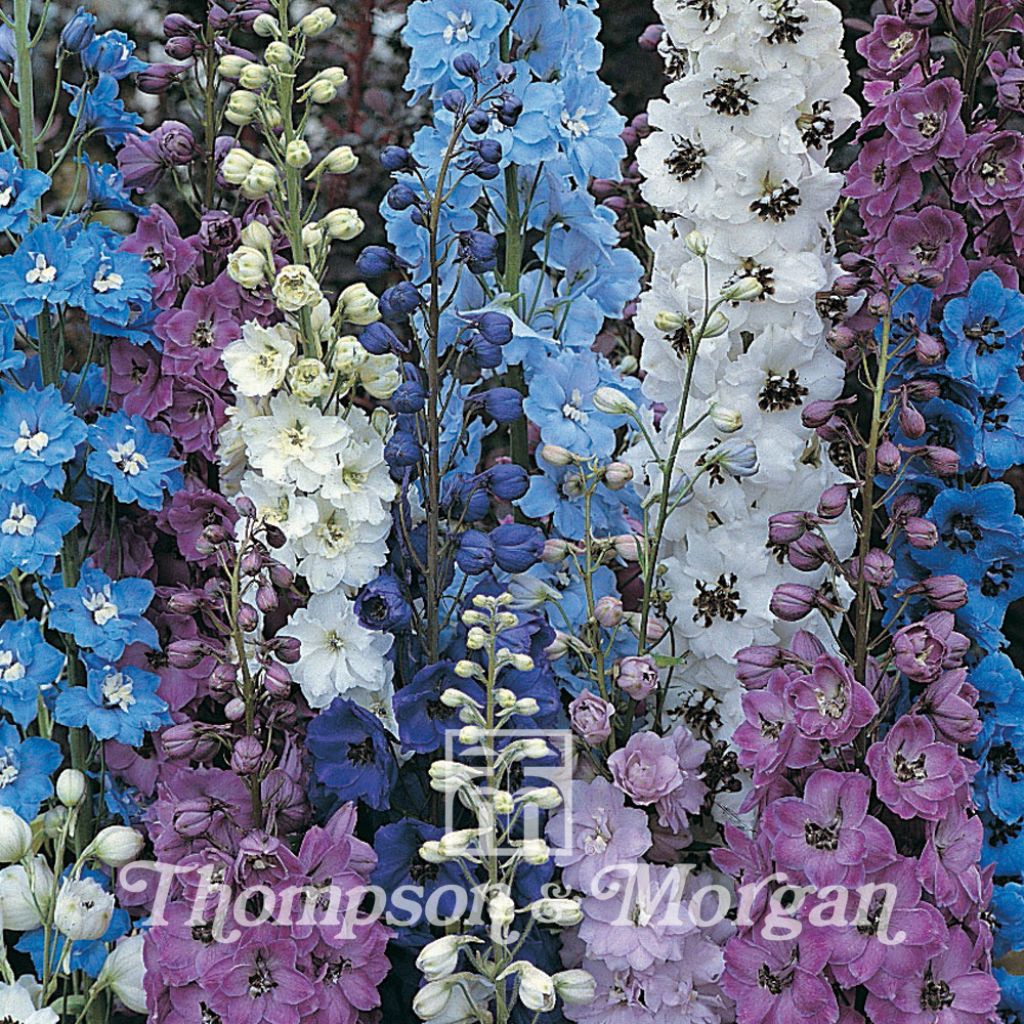

Delphinium Pacific Giants Mixed Seeds - Perennial Larkspur
Delphinium Pacific Giants Mixed Seeds - Perennial Larkspur
Delphinium hybridum Pacific Giants Mixed
Larkspur, Perennial Larkspur
This item cannot be shipped to the selected country
Dispatch by letter from €3.90
More information
Dispatch by letter from €3.90
More information
Schedule delivery date,
and select date in basket
This plant carries a 6 months recovery warranty
More information
We guarantee the quality of our plants for a full growing cycle, and will replace at our expense any plant that fails to recover under normal climatic and planting conditions.
Seed-only orders are dispatched by sealed envelope. The delivery charge for seed-only orders is €3.90.

Does this plant fit my garden?
Set up your Plantfit profile →
Description
Larskpur 'Pacific Giants Mixed' is a classic selection that features tall, stately spires of semi-double blooms in a wide range of complementary colours. The tall flower spikes look gorgeous at the back of summer beds and borders, in front of lower-growing perennials. Also suitable for growing in large containers! Direct sow in spring in rich, cool soil, in a sunny, sheltered position.
Delphinium 'Pacific Giants Mixed' brings together several popular heirloom varieties, selected from Delphinium elatum (known as alpine delphinium or candle larkspur). These short-lived perennials form 50 cm wide clumps. The leaves are palmately divided or lobed, soft green in colour, topped with sturdy floral stems in summer that grow to 1 m tall or more. From June to September, semi-double, cup-shaped blooms appear, gathered on erect, wind-resistant spires. They display a wide array of harmonious blue, pink, purple and white shades and are a magnet to foraging insects.
The characteristic silhouette of Delphiniums always brings an elegant fullness, verticality and charm to perennial beds. For a romantic touch, combine them with old roses and Baby's Breath. The long-lasting blooms are particularly suitable for cutting. For dried flower arrangements, hang small bouquets upside down in a dry, well-ventilated place, away from direct sunlight. This selection is also suitable for growing in large pots and containers.
Flowering
Foliage
Plant habit
Safety measures
Botanical data
Delphinium
hybridum
Pacific Giants Mixed
Ranunculaceae
Larkspur, Perennial Larkspur
Cultivar or hybrid
ingestion
Cette plante est toxique si elle est ingérée volontairement ou involontairement.
Ne la plantez pas là où de jeunes enfants peuvent évoluer, et lavez-vous les mains après l'avoir manipulée.
Pensez à conserver l'étiquette de la plante, à la photographier ou à noter son nom, afin de faciliter le travail des professionnels de santé.
Davantage d'informations sur https://plantes-risque.info
Other Delphinium seeds
Planting and care
Sow Delphinium Pacific Giants from February to June in a good quality, well-drained soil, and lightly cover the seeds with a pinch of compost or vermiculite. Place the seed tray in a mini-greenhouse at a temperature of 10-13°C, or seal it in a transparent polyethylene bag and keep it in a dark place until germination, which takes 1 to 3 months. Keep the compost moist but not wet.
When the seedlings are large enough to handle, transplant them into 8 cm pots and move the Delphinium plants to cooler conditions. Once all risk of frost has passed, gradually acclimatize the young plants to outdoor conditions for 7 to 10 days before planting them outside in the ground. Plant the Delphiniums at a distance of 45cm in moist, fertile, well-prepared and well-drained soil. Delphiniums dislike stagnant moisture. Choose a sunny location sheltered from strong winds. Protect young Delphiniums from attacks by slugs and snails.
Sowing period
Intended location
-
, onOrder confirmed
Reply from on Promesse de fleurs
Flower seeds
Haven't found what you were looking for?
Hardiness is the lowest winter temperature a plant can endure without suffering serious damage or even dying. However, hardiness is affected by location (a sheltered area, such as a patio), protection (winter cover) and soil type (hardiness is improved by well-drained soil).

Photo Sharing Terms & Conditions
In order to encourage gardeners to interact and share their experiences, Promesse de fleurs offers various media enabling content to be uploaded onto its Site - in particular via the ‘Photo sharing’ module.
The User agrees to refrain from:
- Posting any content that is illegal, prejudicial, insulting, racist, inciteful to hatred, revisionist, contrary to public decency, that infringes on privacy or on the privacy rights of third parties, in particular the publicity rights of persons and goods, intellectual property rights, or the right to privacy.
- Submitting content on behalf of a third party;
- Impersonate the identity of a third party and/or publish any personal information about a third party;
In general, the User undertakes to refrain from any unethical behaviour.
All Content (in particular text, comments, files, images, photos, videos, creative works, etc.), which may be subject to property or intellectual property rights, image or other private rights, shall remain the property of the User, subject to the limited rights granted by the terms of the licence granted by Promesse de fleurs as stated below. Users are at liberty to publish or not to publish such Content on the Site, notably via the ‘Photo Sharing’ facility, and accept that this Content shall be made public and freely accessible, notably on the Internet.
Users further acknowledge, undertake to have ,and guarantee that they hold all necessary rights and permissions to publish such material on the Site, in particular with regard to the legislation in force pertaining to any privacy, property, intellectual property, image, or contractual rights, or rights of any other nature. By publishing such Content on the Site, Users acknowledge accepting full liability as publishers of the Content within the meaning of the law, and grant Promesse de fleurs, free of charge, an inclusive, worldwide licence for the said Content for the entire duration of its publication, including all reproduction, representation, up/downloading, displaying, performing, transmission, and storage rights.
Users also grant permission for their name to be linked to the Content and accept that this link may not always be made available.
By engaging in posting material, Users consent to their Content becoming automatically accessible on the Internet, in particular on other sites and/or blogs and/or web pages of the Promesse de fleurs site, including in particular social pages and the Promesse de fleurs catalogue.
Users may secure the removal of entrusted content free of charge by issuing a simple request via our contact form.

































